Appomattox Iron Works
Introduction
Text-to-speech Audio
Images
Built in 1815, the machine shop building at Appomattox Iron Works is the oldest in the complex and is an early example of Federal architecture in Petersburg. Photo by John Reidy.
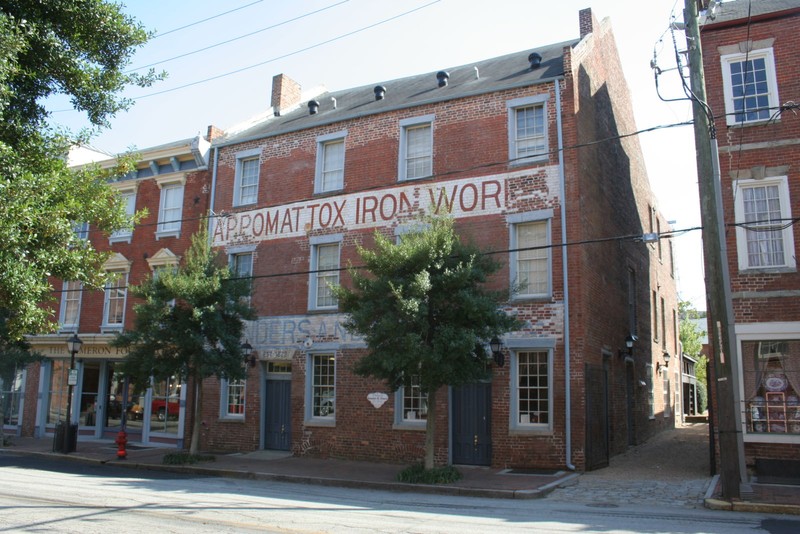
The Historic American Buildings Survey (HABS) documents places like Appomattox Iron Works with scale drawings and photographs as a form of preservation.
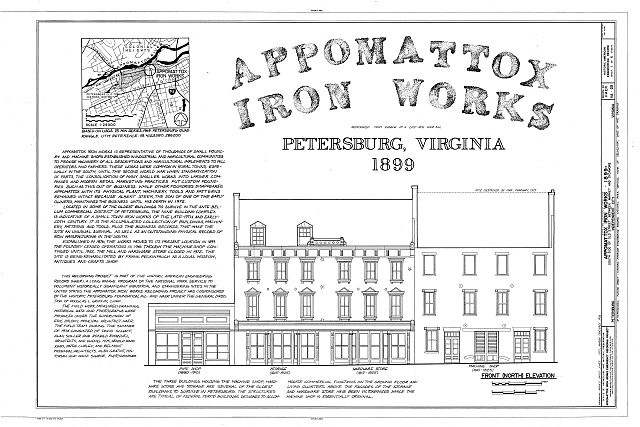
Appomattox Iron Works buildings that served as storage and a hardware store. Photo by HABS.
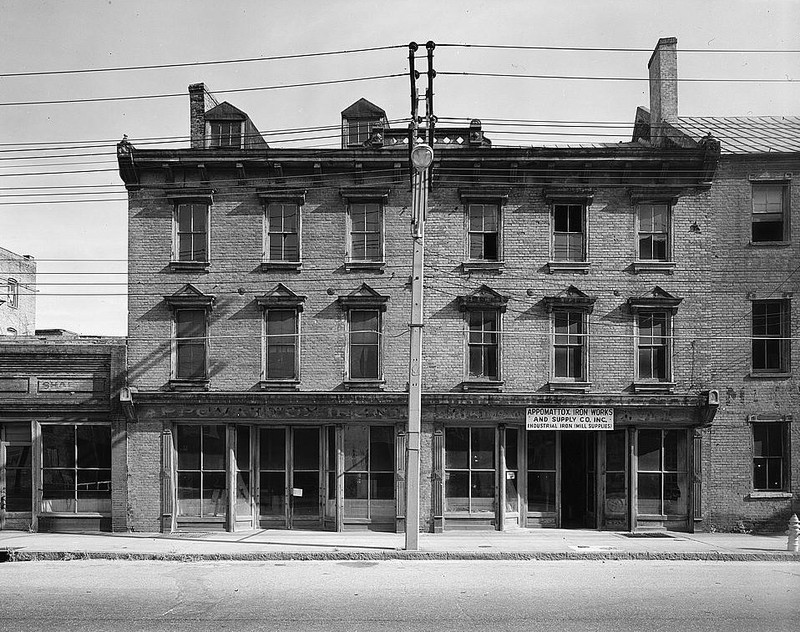
The cupola furnace was used to melt cast iron. Photo by HABS.
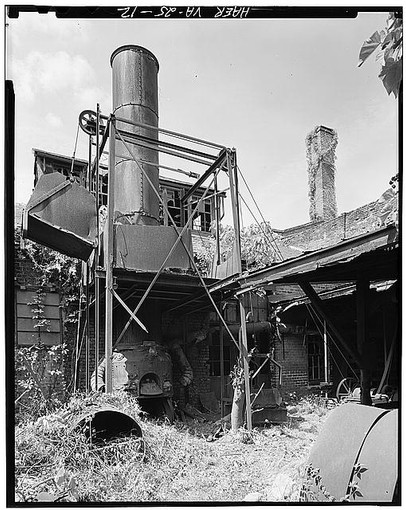
Inside the Appomattox machine shop. Photo by HABS.
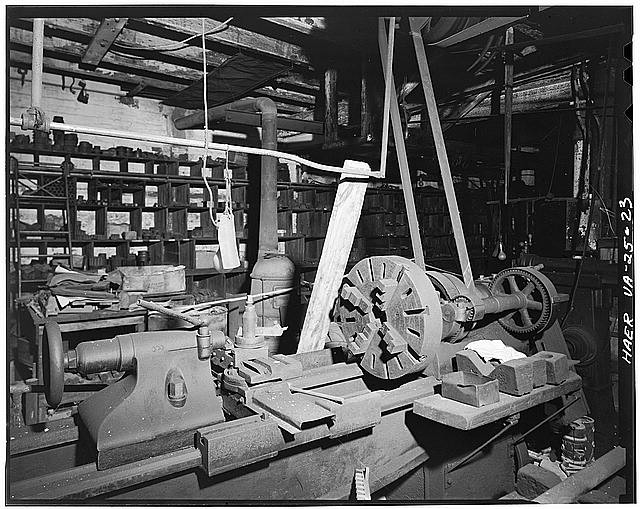
The 1913 peanut shelling and grading machine patented by Albert and Charles Steere.
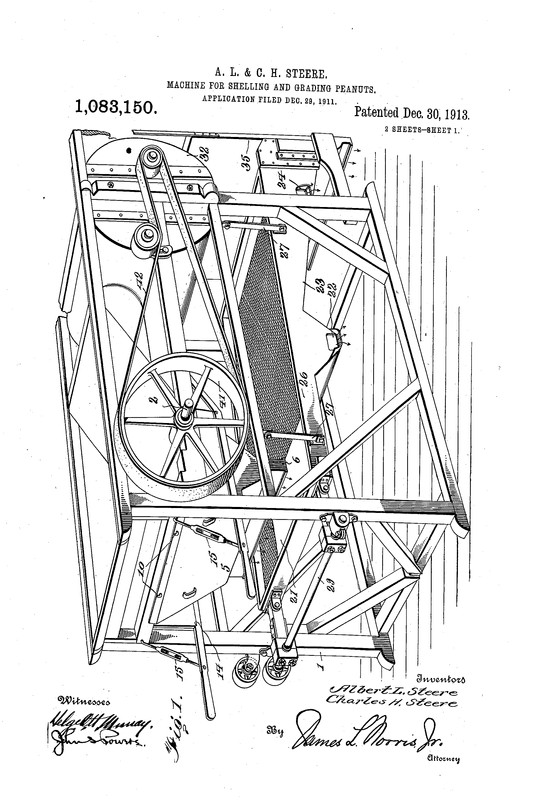
The 1934 peanut harvester patented by Charles Steere.
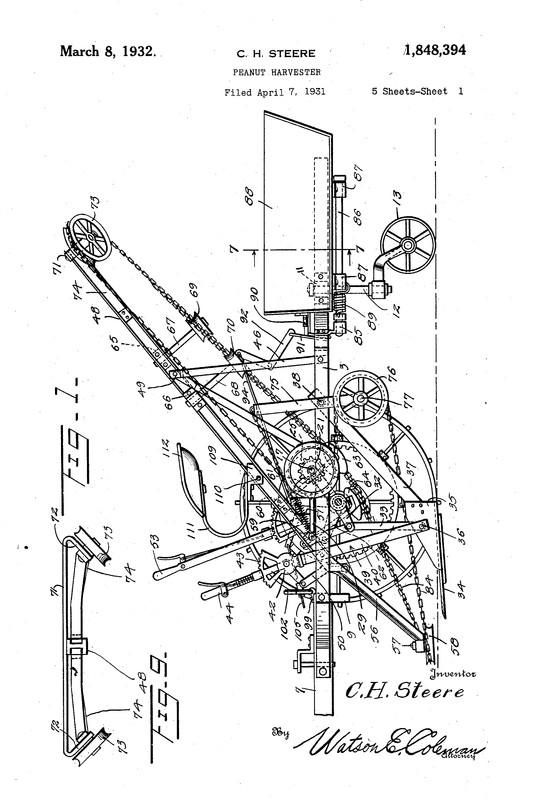
Ad for the peanut machines in February 1921 edition of The Peanut Promoter.
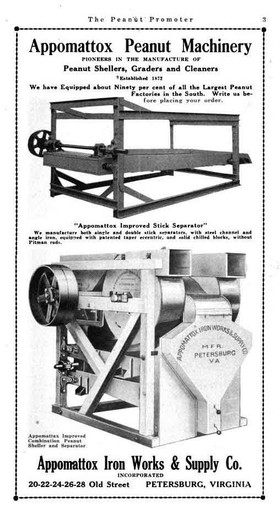
The Appomattox Iron Works machine shop was one of the few buildings spared in Petersburg's fire of 1815. It is the city's last remaining example of a commercial building in which the living quarters were housed in an apartment under a separate roof.
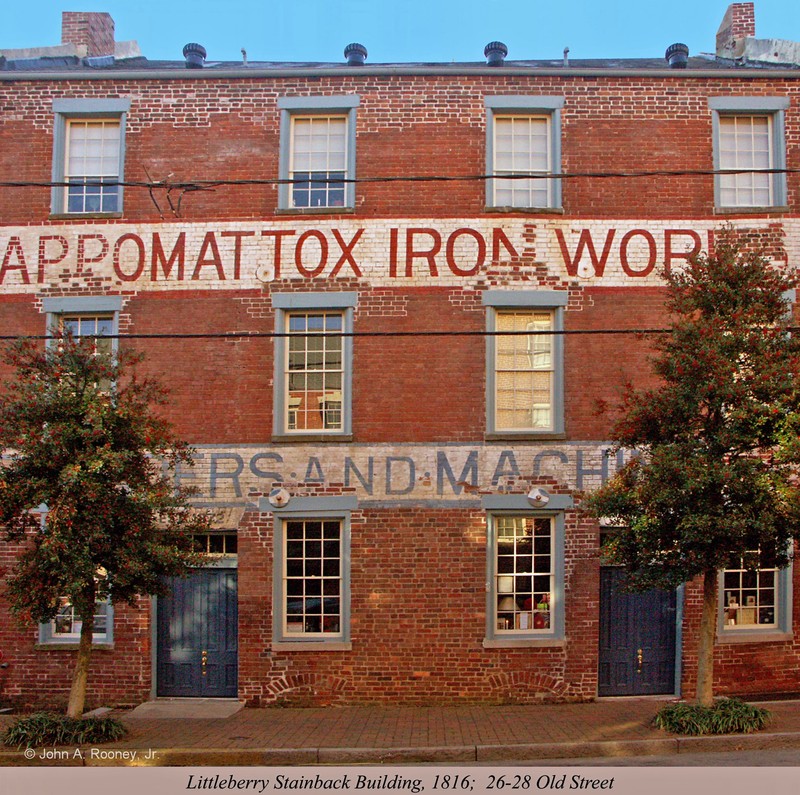
Backstory and Context
Text-to-speech Audio
The nine buildings of the Appomattox Iron Works consist of a machine shop, mill store, supply room, pipe shop, the carpenter's shop and pattern shop, core room, foundry building, Blacksmith's shop, and ruins of a stable.2 According to the National Register nomination, these structures provide "an outstanding record of antebellum iron manufacturing in the South."3
The foundry, in a large brick building from 1850, was where workers extracted raw metals and formed them into something new. Although non-ferrous metals like brass could be melted in an indoor furnace, iron smelting took place in a coke-fueled cupola outdoors, due to the high level of heat released in the smelting process. Neighboring buildings, such as the Blacksmith shop, helped customize and finish metal products, or ensured that the machines, equipment, and processes were running smoothly.4
The most eye-catching structure may be the machine shop, which still bears the faded painted sign on its brick facade. Built in 1815, it was both a commercial building and a residence. Interestingly, however, it is not built in the usual way. While it was common for residents to live on the floor above the shop, the Appomattox machine shop residents lived in apartments attached to the rear of the building. On the street side, the first floor contained machines to drill, press, grind, and shape materials from the foundry, while the upper two floors contained offices and storage. The machine shop is also a notable example of Federal architecture used in an early American commercial property. It is square and symmetrical, with tall, double-hung windows topped with a wooden cornice.5
The Appomattox Iron Works remained in the Steere family for multiple generations, which contributed to its preservation. It is now part of the Old Towne Historic District in Petersburg and sits among a variety of commercial buildings. The company records of the Appomattox Iron Works are held by the Library of Virginia in Richmond.6
Sources
2. Allen, "Petersburg Industry..." 17; National Park Service, "Appomattox Iron Works."
3. National Park Service, "Appomattox Iron Works."
4. National Park Service, "Appomattox Iron Works."
5. National Park Service, "Appomattox Iron Works;" "Federal (Adam)," Architectural Styles of America and Europe.
6. Allen, "Petersburg Industry..." 17; National Park Service, "Appomattox Iron Works;" "Appomattox Iron Works and Supply Company Records," Library of Virginia.
Allen, Mary Cherry. "Petersburg Industry, Founded in 1872, Still in Same Family." The Progress-Index. June 15, 1958. p. 17. Accessed September 2017. https://www.newspapers.com/clip/1112733/appomattox_iron_works_supply_co/
"Appomattox Iron Works, 20-28 Old Street, Petersburg, Petersburg, VA." Historic American Buildings Survey. Library of Congress. Washington, D.C.: 1968. http://www.loc.gov/pictures/item/va0817/
Appomattox Iron Works and Supply Company Records, 1834-1992. Accession 42633. Business records collection, The Library of Virginia, Richmond, VA. Accessed September 2017. http://ead.lib.Virginia.edu/vivaxtf/view?docId=lva/vi00685.xml"Federal (Adam)." Architectural Styles of America and Europe. Accessed September 2017. https://architecturestyles.org/federal-adam/
National Park Service. "Appomattox Iron Works." National Register of Historic Places Inventory-Nomination Form. Washington, D.C.: National Park Service, 1976. Prepared by Virginia Historic Landmarks Commission staff. http://www.dhr.Virginia.gov/registers/Cities/Petersburg/123-0087_Appomattox_Iron_Works_1976_Final_No...
Steere, Albert L. and Charles H. Steere. "Machine for shelling and grading peanuts." Patent 1,083,150. December 30, 1913. Accessed September 2017. https://www.google.com.pg/patents/US1083150?dq=ininventor:%22Steere+Charles+H%22&hl=en&sa=X&ved=0ahU...
Steere, Charles H. "Peanut harvester." Patent 1,848,394. March 8, 1932. Accessed September 2017. http://www.google.com.pg/patents/US1848394
